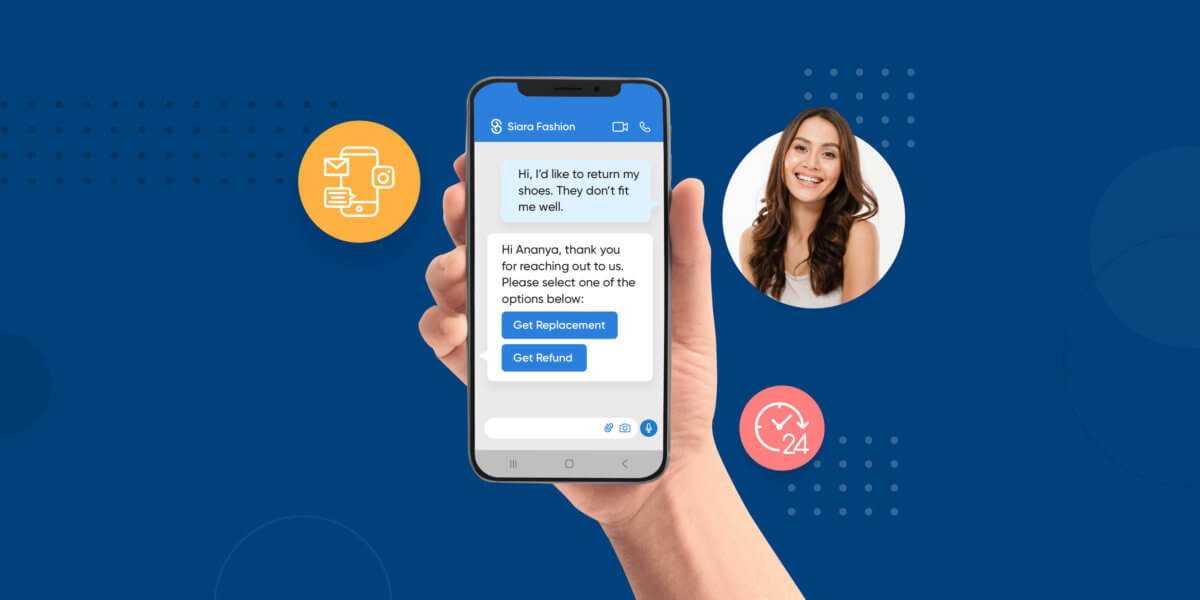Conversational Banking: How Chatbots are Transforming Customer Experience

Conversational Banking: How Chatbots are Transforming Customer Experience
Think about the last time you checked your bank balance or made a transaction. Chances are, a banking chatbot made it happen smoothly. These AI-powered tools are more than just helpful tools – they are transforming financial services.
From simple balance checks to handling complex transactions, they’re on duty 24/7, saving time and cutting costs. And the impact? A whopping $7.3 billion saved in customer support costs for the digital banking industry.
This underlines the growing importance of the adoption of chatbots in banking to deliver an enhanced customer experience along with operational efficiency.
Suggested Reading: How to Use AI Chatbots for Fraud Detection
Why are chatbots important?
Chatbots are changing the banking landscape in several ways. Here’s how:
- 24/7 Customer Service: Imagine getting instant answers to your banking queries anytime, anywhere. Chatbots make this a reality, handling everything from balance checks to transaction history efficiently.
- Cutting Costs: Banks are saving big by automating routine communication using chatbots. This shift means they can focus resources on complex tasks and strategic growth – a smart move for any business.
- Elevating Customer Experience: Personalisation plus availability equals happy customers. Chatbots deliver this and more. They can provide solutions based on the exact query or requirement in no time, making banking convenient and easy for the customers.
Types of Banking Chatbots
Banking chatbots come in various forms, each designed to cater to specific customer needs and streamline banking processes.
- Transactional Chatbots: Efficient and straightforward, they manage routine tasks such as balance inquiries and transactions. This makes banking faster and secure.
- Advisory Chatbots: These bots offer financial insights and advice. They use AI to analyse and provide personalised financial and investment guidance.
- Customer Support Chatbots: Designed for quick response, they address customer queries, saving customers long IVR-led call processes, thereby enhancing the service experience.
- Personal Assistant Chatbots: Advanced in function, they integrate various banking services, offering comprehensive account management.
- Onboarding Chatbots: Streamlining the initial banking procedures, they facilitate user-friendly account setup and verification processes.
Navigating the Complexities of Conversational Banking
Understanding and addressing the inherent challenges and considerations is key to unlocking their full potential. Let’s delve into the challenges and complexities of chatbots in banking:
1. Overcoming Technical Complexities
Chatbots have come a long way, but they are not perfect. Their struggle to grasp complex questions or read emotions can lead to misunderstandings or below par responses. It is vital to recognise these technical limitations and work towards more intuitive, empathetic AI solutions.
2. Fortifying Security and Privacy
In banking, where every bit of data is precious, the security of customer information is non-negotiable. Banks need to critically focus on advanced encryption and authentication to shield against any data threats.
3. Human Oversight and Integration
While chatbots excel in automating standard banking tasks, they may have limited capabilities. They lack the nuanced understanding and complex problem-solving skills inherent to human agents. It is crucial to have a seamless handover from chatbot to human when intricate issues surface. This transition is key in maintaining customer satisfaction and balancing efficiency with personalised attention.
Implementing Banking Chatbots
Embarking on the journey of implementing conversational banking involves strategic planning and a keen understanding of technology and customer needs.
1. Define Objectives and User Needs
It is vital to determine what you want your chatbot to achieve and the specific customer issues it will address. Understanding the user’s expectations and pain points ensures the chatbot is tailored to provide real value, rather than being a generic solution.
2. Choose the Right Platform and Technology
Selecting an appropriate platform is crucial. Consider factors like scalability, security, integration capabilities, and cost. The right technology should align with your bank’s infrastructure and meet the anticipated volume and complexity of customer interactions.
3. Develop Engaging and Efficient Dialogue Flows
The chatbot should guide users through a seamless and intuitive conversation. This needs designing dialogue flows that are logical, concise, and capable of handling various scenarios effectively. A well-crafted conversation flow minimises user frustration and enhances engagement.
4. Train and Test the Chatbot
Continuous training with a wide array of scenarios and regular testing is crucial to ensure the chatbot accurately understands and responds to user queries. This involves feeding it relevant data, refining its algorithms, and regularly updating it based on feedback and new information.
5. Measure Performance and Optimise
Implement analytics to monitor how the chatbot is performing against key metrics like user satisfaction, resolution rate, and engagement. Use this data to make informed decisions on how to optimise and improve the chatbot’s functionality and user experience over time.
Real-World Success Story: ADIB
ADIB, in partnership with Verloop, made a strategic shift by introducing ChatBanking. This sophisticated chatbot, fluent in multiple Arabic dialects and English, significantly improved customer interactions.
The results were transformative. It slashed call centre traffic by 20% and can now solve 80% of customer queries through chat.
The Future of Conversational Banking
The future of banking chatbots is poised at the exciting intersection of technology and personalised service, promising to redefine customer interactions.
- AI Goes Next-Level: The future is about bots that don’t just understand complex questions but respond with greater accuracy. They are getting smarter, making banking more intuitive and less of a hassle.
- Personalisation: Chatbots will offer highly tailored banking advice and services. These advanced chatbots will learn from your banking habits, preferences, and patterns. They can offer advice and services that are completely tailored for every customer.
- Talk Your Way Through Banking: Typing will become dated. Voice-activated banking is the next big thing, making your banking experience as simple as having a conversation and enabling you to manage your finances hands-free, anytime, anywhere.
Request a demo to explore how our chatbot solutions can revolutionise your customer service.
Need more guidance? Our subject matter experts are here to help you implement the most effective chatbot strategy.







